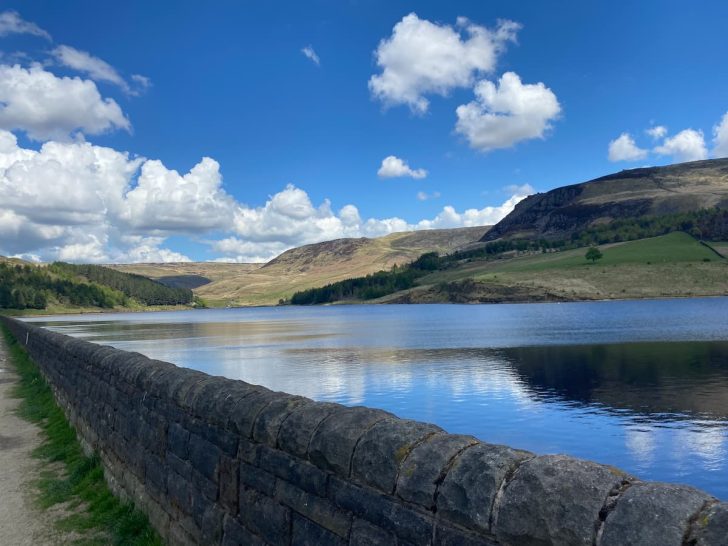The Peak District is known for its stunning landscapes. But did you know there are no natural lakes here? Instead, it’s home to over 62 man-made reservoirs, adding waterly charm to the area.
These reservoirs are more than just water sources. They’re part of the local history and culture, and they draw visitors for their scenic beauty. From the large Ladybower Reservoir to the historic Derwent Dam, there’s a lot to explore.
Join us as we take a quick tour of the Peak District’s reservoirs. You’ll learn how each spot has its own story and why they’re worth a visit.
10 Biggest and Best Lakes & Reservoirs in the Peak District
The following list is in volume order (Basically, in order of size), just for simplicity.
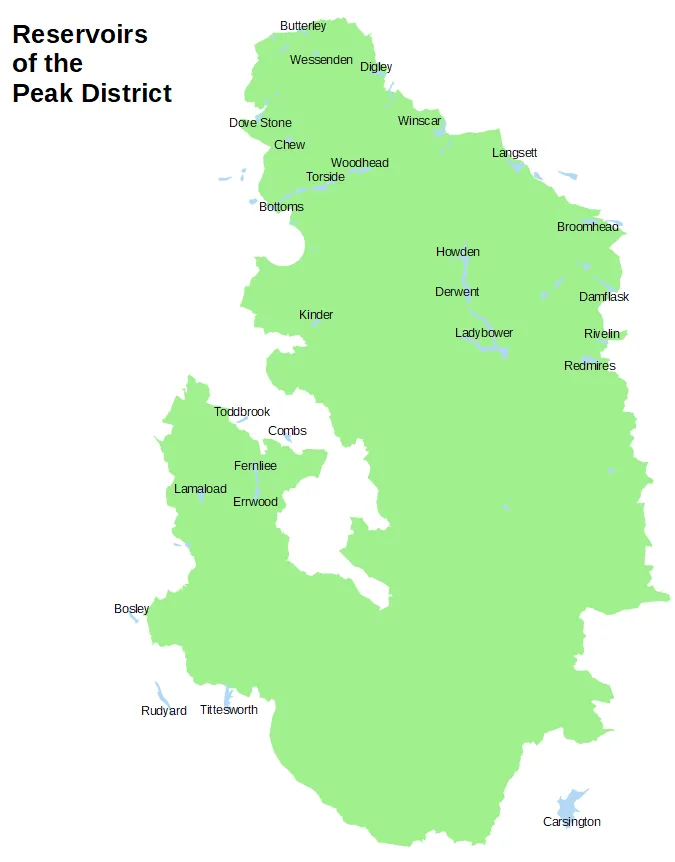
By Douglal – Own work, CC BY-SA 4.0
1. Ladybower Reservoir – 27,800,000 m3
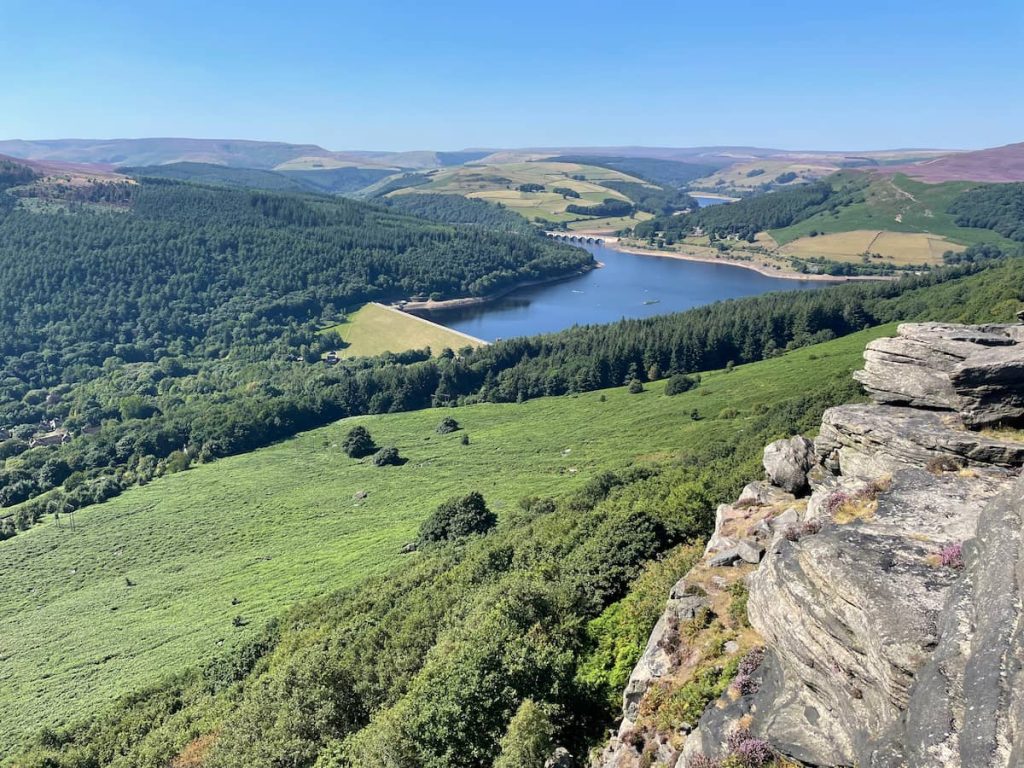
Ladybower Reservoir, nestled in the heart of the Peak District, serves both as a vital water supply and a captivating spot for visitors.
Its unique bellmouth overflows, locally known as the “plugholes,” are a visual marvel, especially during heavy rains.
The reservoir also holds a rich history, with the Peak District villages of Ashopton and Derwent, which occasionally resurface from below.
Surrounded by picturesque landscapes, it offers ample recreational opportunities like walking around Win Hill to the east and Bamford Edge to the south as well as plenty of cycling, and fishing spots.
The surrounding woodlands and moorlands are crisscrossed by trails, inviting exploration of the area’s natural beauty and wildlife. The blend of intriguing history and stunning scenery makes Ladybower a notable mention.
2. Derwent Reservoir (Dam) – 9,640,000 m3
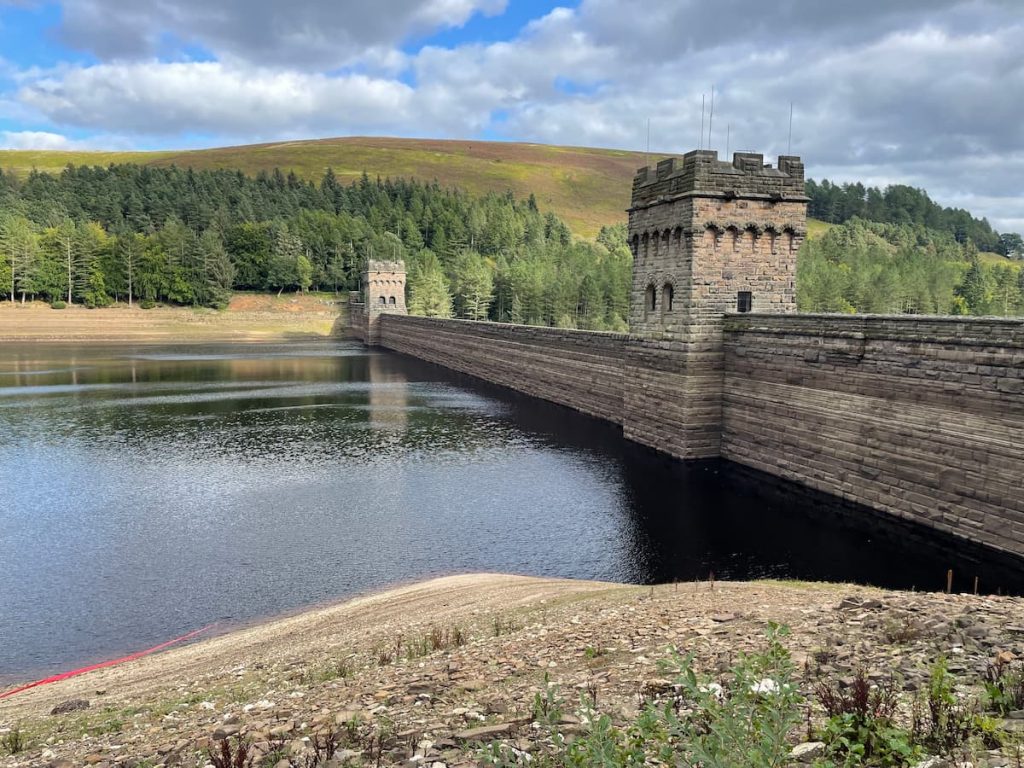
Derwent Reservoir in the Peak District is often associated with its historical significance, being a practice site for the Dambusters during World War II. The Iconic Dam wall is internationally known for its flowing water after heavy rain.
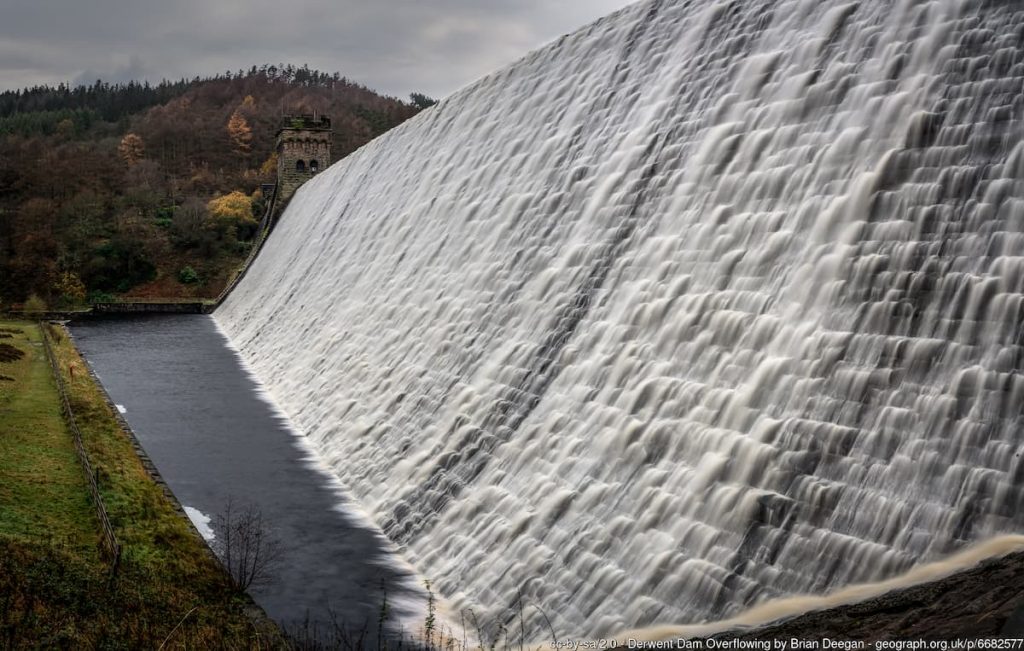
The reservoir, with its twin towers, tranquil waters, and surrounding woodlands, offers a serene escape. Visitors can explore the many walking and cycling trails or engage in watersports. The visitors centre has many facilities, including a cafe and bike hire shop.
With its blend of natural beauty and historical relevance, Derwent Reservoir is a captivating destination for those interested in both outdoor adventures and the echoes of history.
3. Winscar Reservoir

Winscar Reservoir, also known as Winscar Dam, is situated on the headwaters of the River Don in South Yorkshire, England, nestled within the Peak District National Park near Dunford Bridge, northwest of Sheffield.
Established in the 1850s and later enhanced in the 1970s to boost its capacity, the reservoir can be observed from the vantage point of a bridleway running between two accessible car parks on Windle Edge and Broad Hill.
Winscar Reservoir is one of 25 dams along the River Don, and due to a low supply catchment, it takes, on average 2 years to refill once fully drained!
The reservoir is not only a haven for walkers but also a popular spot for cyclists, windsurfers, and sailors, offering a blend of serene nature and recreational activities amid the spectacular scenery of the Peak District.
4. Howden Reservoir
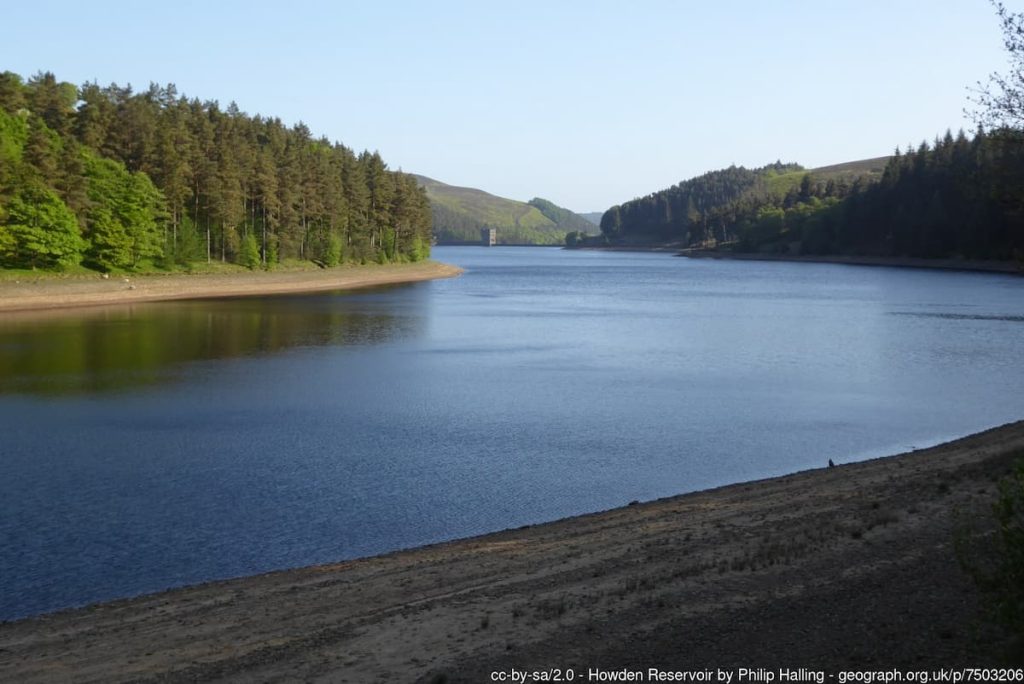
Howden Reservoir, the uppermost of three reservoirs in the Upper Derwent Valley, England, sports a unique Y-shape with a lengthy arm stretching around 2km (1¼ miles).
Straddling the boundary between Derbyshire and Sheffield, South Yorkshire, it’s an intriguing blend of geographical and historical richness. This reservoir is part of a trio, alongside Ladybower and Derwent reservoirs, each bearing its own distinctive charm.
Constructed between 1901 and 1912, the architectural grandeur of Howden Dam, designed by Edward Sandeman with W. Flockhart as the architectural advisor, is accentuated by its rock-faced gritstone exterior and twin castellated towers.
5. Torside Reservoir
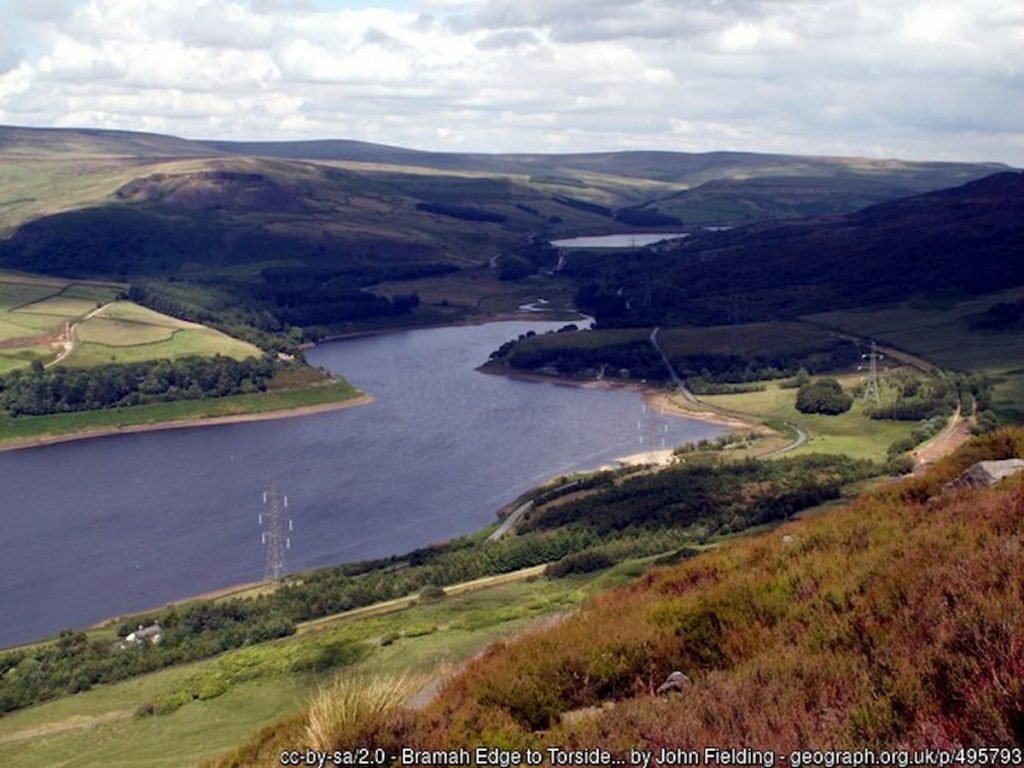
Torside Reservoir, engineered by John Frederick Bateman between 1849 and 1864. It forms part of the Longdendale Chain of reservoirs, constructed to channel water from the River Etherow to Greater Manchester’s urban areas.
The reservoir is a notable feature along the Trans Penine Trail, which follows the first railway line connecting Manchester and Sheffield, providing a scenic route for both cyclists and walkers. At the reservoir, visitors can find amenities like toilets and picnic benches, enhancing the outdoor experience.
Spanning a length of 2.25 km (1.4 miles), Torside is a relatively slim reservoir compared to others in this list.
For those looking to explore further, a circular walking or cycling route of about 6 km (4 miles) encircles the large lake, with a substantial car park available at Torside Car Park on the southern side, making it a convenient starting point for the Longdendale Trail.
6. Tittesworth Reservoir
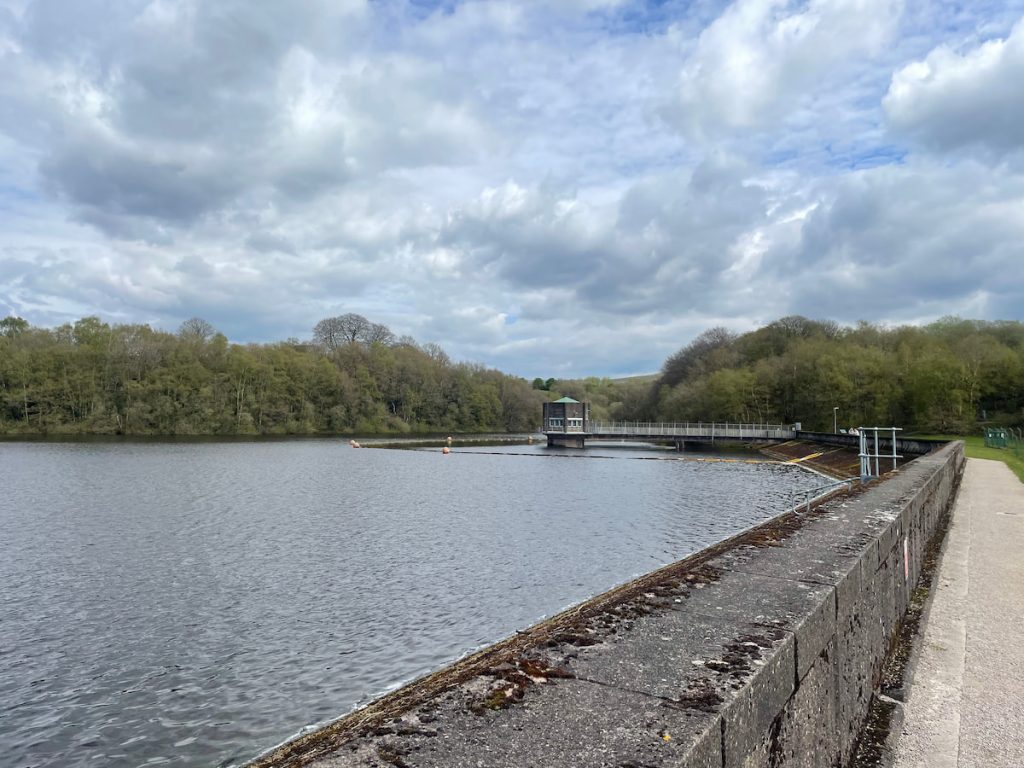
Tittesworth Reservoir, near Leek, Staffordshire, England, is a water storage reservoir fed by the River Churnet. Built in 1858 and extended in 1963, it’s owned and operated by Severn Trent Water. Initially, the 1858 dam regulated the river flow for Leek’s textile mills, but the modern dam, built between 1959 and 1963, aids in water storage, making Tittesworth the second-largest reservoir by volume in Staffordshire.
The reservoir offers a myriad of activities, from water sports to peaceful walks, wildlife watching, and seasonal events, making it a lively spot for outdoor enthusiasts. It’s also home to a visitor centre open year-round, providing a base for exploring the spectacular Peak District National Park with lots of parking.
Tittesworth offers a great circular walk, which is family-friendly, showcasing its natural beauty. A shorter, pram-friendly walk of 2.8 km (1.7 miles) is also available, offering beautiful reservoir views and woodland paths.
7. Langsett Reservoir
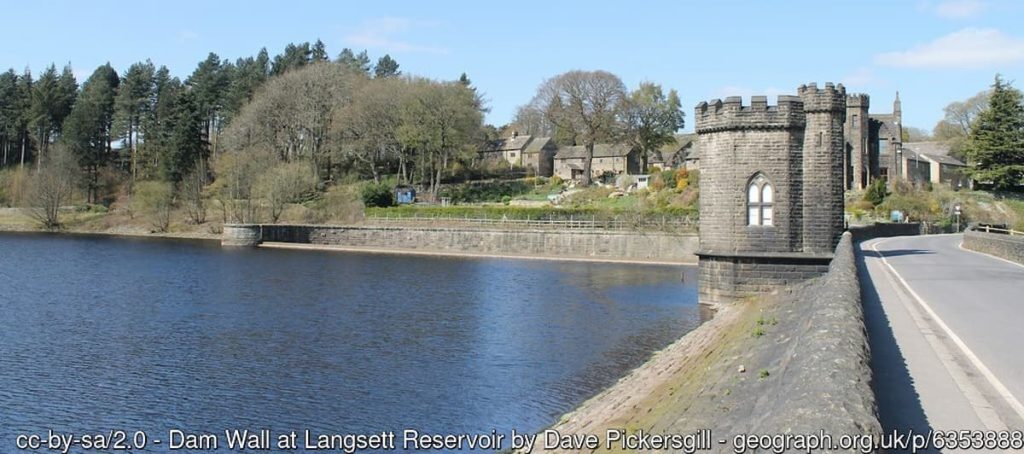
Langsett Reservoir, located near the villages of Langsett and Upper Midhope on the edge of the Peak District National Park in South Yorkshire, England, is a significant water supply reservoir.
Constructed between 1898 and 1904, it’s now managed by Yorkshire Water and supplies water to Sheffield and Barnsley via the Langsett Treatment Works.
In terms of recreation, Langsett Reservoir is embraced by walkers, mountain bikers, and birdwatchers. The Pennine peaks of Pike Lowe and Hingcliff Common lie to the south and southwest of the reservoir, respectively, offering breathtaking views.
The reservoir’s vicinity is also a habitat for wildlife, with a particular emphasis on birdwatching, and visitors might spot species like treecreepers, great spotted woodpeckers, and red grouse. Moreover, a network of trails around the reservoir provides diverse options for exploring the area, whether on foot or by bike.
Additionally, the reservoir’s history is rich with tales from the early 20th century when local depopulation occurred to improve water purity, leading to the abandonment of six farms.
8. Woodhead Reservoir
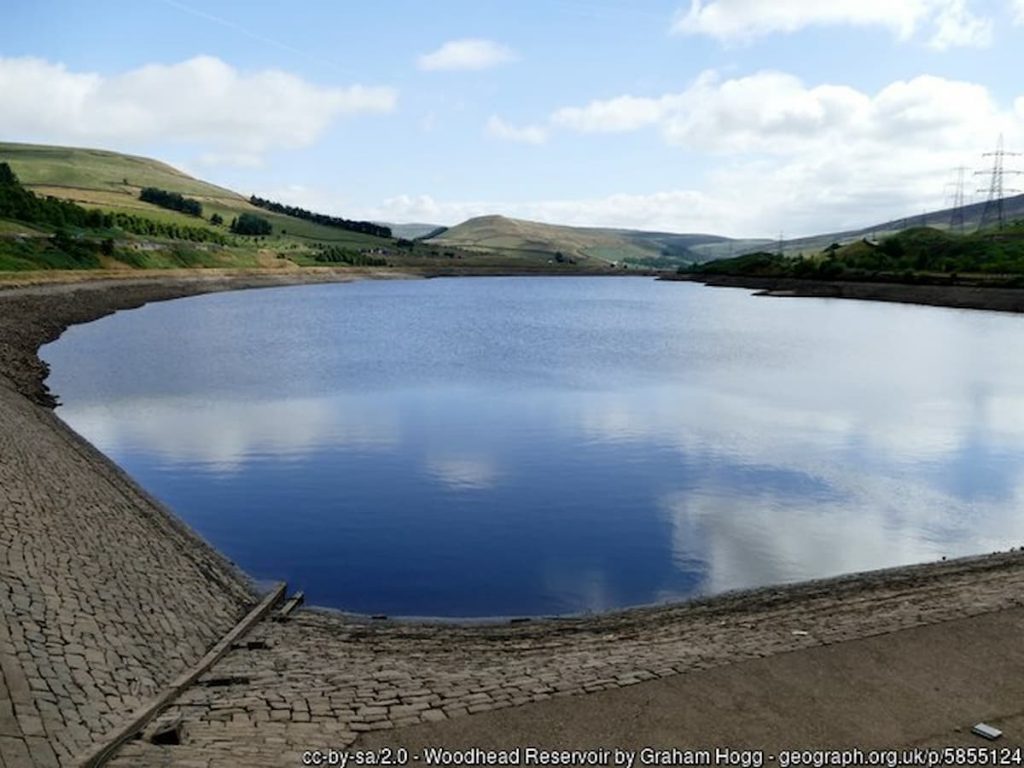
Woodhead Reservoir, situated near the hamlet of Woodhead in Longdendale, north Derbyshire, England, is a man-made lake constructed by the notable engineer John Frederick Bateman between 1847 and 1877.
It was created as part of the Longdendale Chain of reservoirs, designed to supply water from the River Etherow to urban areas in Greater Manchester. This reservoir marks the top of the chain and was the first to commence construction, although due to various challenges, it was the last to be completed.
Recreationally, Woodhead Reservoir is a part of the beautiful Longdendale Trail, which encompasses a circular route around the reservoir in the Upper Longdendale Valley, starting from the Crowden car park just off the A628 (Woodhead Road).
9. Dovestone Reservoir

Dovestone Reservoir is situated at the convergence of the valleys of the Greenfield and Chew Brooks, above the village of Greenfield on Saddleworth Moor, within Greater Manchester, England.
The reservoir lies on the western edge of the Peak District National Park, melding natural beauty with accessibility, especially given its proximity to Manchester.
The work was completed with the construction of Dovestone Reservoir in 1968, aimed at collecting water from the surrounding moorland. The reservoir now supplies drinking water to the surrounding areas and stands as a prominent tourist attraction.
The construction encountered opposition from local mill owners, who were concerned that damming the river would interrupt their water supply, leading to the construction of a bypass tunnel higher up in the hillside.
Recreationally, Dovestone Reservoir is a hub of outdoor activities. Its picturesque landscapes provide a backdrop for several walking routes that circle the reservoir and the craggy landscape surrounding it, such as the Trinnacle trail.
Additionally, the reservoir is surrounded by various trails suitable for all, making it a tranquil spot for a leisurely and scenic walk. Moreover, it’s part of a spectacular area popular with visitors and for family days out, featuring a sailing club, a permanent orienteering course, an extensive network of footpaths, and good links to areas of open-access moorland.
10. Fernliee Reservoir

Fernilee Reservoir is a notable reservoir nestled, within Derbyshire peaks, and in close proximity to the Cheshire boundary.
The reservoir is fed by the River Goyt and is located near the village of Fernilee to its north, with Goyt’s Moss to the south and flanked by Hoo Moor to the west and Combs Moss to the east.
Fernilee Reservoir, the lower of two reservoirs in the Goyt Valley, with the upper being Errwood Reservoir, plays a crucial role in supplying drinking water to Stockport and its surrounding areas.
The reservoir was a significant undertaking, inaugurated in 1932 following an Act of Parliament in 1825, and saw its construction completed in 1938 at a cost of £480,000.
Boasting a capacity of about 5 billion litres and a depth of 38 meters, the construction of Fernilee Reservoir came with a significant societal impact. Local farming families were displaced from their ancestral lands, leading to the establishment of a temporary village known as ‘Tin Town’ for the navvy workers near Fernilee. Noteworthy, too is the demolition of the hamlet of Goyt’s Bridge and Errwood Hall (the Grimshawe family mansion) in the 1930s to prevent any pollution of the water flowing into the reservoir.

Recreationally, Fernilee Reservoir offers a serene and beautiful environment that beckons to nature lovers and those seeking a peaceful retreat. The western shore, with its blend of water and woodland, is a popular spot for walkers.
There’s a historical essence to Fernilee Reservoir, with the nearby Roman road called “The Street” running alongside Errwood Reservoir and to the west of Fernilee Reservoir, adding a touch of historical intrigue to the scenic beauty of the area.
Full list of Peak District Lakes and Reservoirs (With Data)
This is the comprehensive list of lakes and reservoirs in the Peak District National Park.
Please note that some of the water bodies are technically outside the boundaries of the national park. However, arguably, many individuals consider them part of it as they’re within walking distance of the park.
Carsington Water (Honorable mention)

Carsington Water, nestled between Wirksworth and Kniveton in Derbyshire, England, is a significant reservoir operated by Severn Trent Water.
Though slightly outside the Peak District National Park, it’s an honourable mention due to its importance and scenic beauty. The reservoir takes water from the River Derwent at Ambergate during winter, pumping it up through a 10.5-kilometer (6.5 mi) long tunnel and aqueduct, and releases it back into the river during summer for further treatment downstream.
Carsington Water ranks as the ninth largest reservoir in England and, at its peak, can hold up to 7,800 million gallons of water with a maximum depth of 31 meters (equivalent to the height of seven double-decker buses). The reservoir was officially opened by Queen Elizabeth II in May 1992, after overcoming a setback in 1984 when a partial collapse of the dam occurred.
As a hub for leisure activities, Carsington Water offers a plethora of options, including walking, cycling, fly fishing, birdwatching, sailing, canoeing, kayaking and windsurfing. The reservoir also hosts events like the Festival of the Peak and is surrounded by facilities like the Visitor Centre, which houses a café with panoramic views, retail outlets, and an equipment rental store. The Carsington Sailing Club, situated along an extensive part of the shoreline, provides boat hiring and storing services.
FAQs for Reservoirs in the Peak District

How many lakes are in the Peak District?
The Peak District does not have natural lakes. However, around the national park, there are over 60 reservoirs.
What is the famous reservoir in the Peak District?
The famous reservoir is the Derwent Reservoir, known for the iconic Derwent Dam. The dam is notable for its historic role in the Dam Busters’ practice runs and its impressive water cascades when water levels are high.
What is the largest reservoir in the Peak District?
Ladybower Reservoir is the largest in the Peak District, with a maximum capacity of 27,800,000 cubic metres and a span of 4 km in length.

